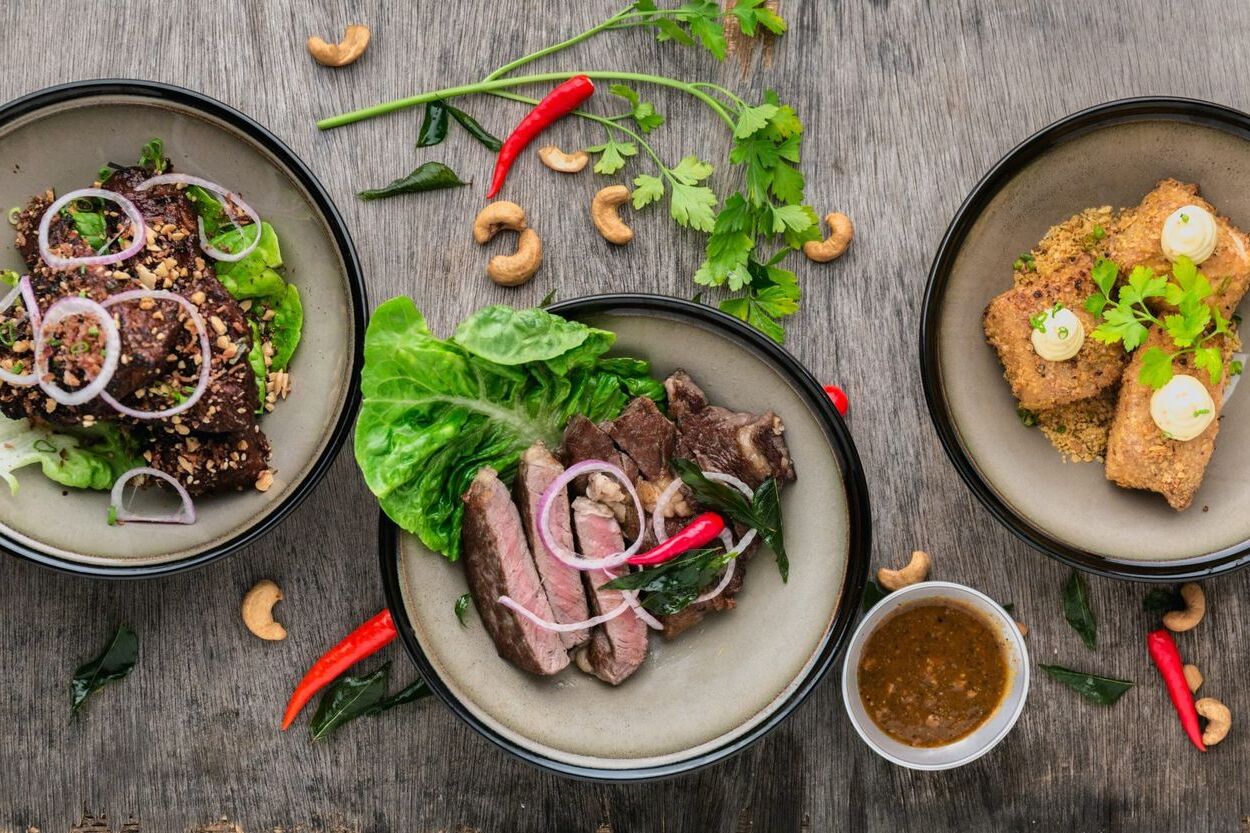
Why do some cultures avoid certain foods while others embrace them? Food taboos are unwritten social rules that dictate what people can and cannot eat based on cultural, religious, or health-related reasons. These taboos are found in virtually all human societies and can have profound impacts on nutritional intake and overall health. From prohibitions during pregnancy to restrictions based on social class, food taboos shape dietary practices in diverse ways. They can be rooted in historical events, environmental factors, or empathetic reasons. Understanding these taboos helps us appreciate the rich tapestry of human culture and the complex factors that influence our eating habits.
Key Takeaways:
- Food taboos are unwritten rules that dictate what can and cannot be eaten, deeply rooted in cultural, religious, and social practices, affecting health and nutrition.
- Food taboos vary widely across different societies, influenced by cultural, religious, and historical factors, impacting nutritional intake and overall health.
What Are Food Taboos?
Food taboos are unwritten social rules that dictate what can and cannot be eaten. These rules are deeply embedded in cultural, religious, and social practices. Let's explore some fascinating facts about food taboos.
-
Definition of Food Taboos: Food taboos are social rules that regulate human behavior by prohibiting or allowing specific foods. These rules can be based on cultural, religious, or legal grounds and vary widely across different societies.
-
Ubiquity of Food Taboos: Food taboos exist in virtually all human societies. They are an integral part of cultural and religious practices, influencing what people eat and how they prepare their food.
-
Origins of Food Taboos: The origins of food taboos are diverse and often complex. They can be rooted in religious beliefs, cultural traditions, or historical events. For example, Jewish dietary laws (kashrut) and Hindu dietary regulations are well-documented examples of food taboos based on religious beliefs.
Health and Gender-Specific Taboos
Food taboos often have health-related roots and can affect males and females differently. These taboos can have significant impacts on nutritional intake and overall health.
-
Health-Related Roots: Many food taboos have health-related roots. For instance, the prohibition on eating certain foods during pregnancy is often based on the belief that these foods can harm the fetus or complicate childbirth.
-
Gender-Specific Taboos: Food taboos can affect males and females differently. In some cultures, pregnant women are restricted from eating certain foods to prevent complications during childbirth. Similarly, menstruating women may have specific dietary restrictions to maintain their health and well-being.
-
Life Cycle-Related Taboos: Food taboos often coincide with significant life events. For example, infants and children may have specific dietary restrictions to ensure their nutritional needs are met. Similarly, elderly individuals may have different dietary requirements due to age-related health issues.
Cultural and Religious Influences
Every culture has its unique set of food taboos, often influenced by religious beliefs and social class.
-
Cultural Variations: Every culture has its unique set of food taboos. For instance, in some African cultures, certain insects are considered taboo, while in others, they are a common source of protein.
-
Religious Influences: Religion plays a significant role in shaping food taboos. Jewish dietary laws (kashrut) and Islamic dietary laws (halal) are well-known examples of religiously based food taboos. These laws dictate what foods are permissible and how they should be prepared.
-
Social Class and Taboos: Food taboos can also be influenced by social class. In medieval and Renaissance Italy, for example, certain foods were reserved for the wealthy, while others were considered taboo for the lower classes.
Environmental and Empathetic Reasons
Environmental factors and empathetic reasons can also influence food taboos, affecting what people eat and why.
-
Environmental Factors: Environmental factors can also influence food taboos. In some cultures, certain foods are avoided due to their environmental impact or because they are perceived as being too expensive or scarce.
-
Empathetic Reasons: Some food taboos are based on empathetic reasons. For example, in some cultures, children are restricted from eating certain foods because they are believed to cause behavioral problems or other negative effects.
-
Historical Context: Food taboos often have historical roots. For instance, the prohibition on eating pork in Judaism and Islam dates back to ancient times and is rooted in historical and cultural practices.
Proximate and Ultimate Causes
Understanding the causes of food taboos can help us see why they exist and how they affect different populations.
-
Proximate and Ultimate Causes: The causes of food taboos can be proximate (immediately visible) or ultimate (long-term). For example, the avoidance of certain foods during pregnancy may have an immediate health benefit (proximate cause), but the underlying cultural or religious beliefs (ultimate cause) are often complex and multifaceted.
-
Distribution of Taboos: Food taboos can affect different sections of the population unevenly. For example, in some cultures, only certain individuals (like pregnant women or menstruating women) are restricted from eating specific foods.
-
Periodical Taboos: Some food taboos are periodical, meaning they are suspended or enforced at specific times. For example, during Lent, Catholics abstain from meat, and during Yom Kippur, Jews fast from food and drink.
Food Accessibility and Maternal Knowledge
Food accessibility and maternal knowledge about nutrition play crucial roles in dietary practices and the impact of food taboos.
-
Food Accessibility: Food accessibility is a critical factor in understanding food taboos. In rural areas where certain foods are scarce, taboos may be more prevalent due to limited dietary options.
-
Maternal Knowledge: Maternal knowledge about nutrition plays a significant role in dietary practices. Pregnant women with poor knowledge of maternal nutrition may adhere more closely to cultural or religious dietary restrictions, which can negatively impact their health and the health of their offspring.
-
Attitudes Towards Nutrition: Attitudes towards nutrition also influence food taboos. Negative attitudes towards certain foods can lead to their prohibition, even if they are nutritionally beneficial.
Nutritional Impact and Protein Sources
Food taboos can have significant nutritional impacts, especially when they restrict essential nutrients like protein.
-
Nutritional Impact: Food taboos can have significant nutritional impacts. Restrictive dietary practices can deplete women’s bodies of essential nutrients, particularly during pregnancy, which can have generational effects on health.
-
Protein Sources: Protein sources like meat, eggs, and fish are often restricted during pregnancy due to cultural or religious beliefs. For example, in India, pregnant women avoid eating eggs because they believe it will cause the baby to come late.
-
Carbohydrates and Fats: Carbohydrates and fats are crucial sources of calories in many diets. However, food taboos related to these macronutrients can significantly impact nutritional intake. For instance, in Khatlon Province, Tajikistan, food taboos restrict the consumption of staple foods like wheat and oil, which are essential for daily calorie intake.
Socio-Ecological Factors and Gender Neutrality
Socio-ecological factors and a gender-neutral approach can provide a deeper understanding of food taboos.
-
Socio-Ecological Factors: Socio-ecological factors, including economic and political challenges, influence food taboos. In rural areas, food-limiting practices are often informed by complex socio-ecological systems that affect community health.
-
Gender Neutrality: Some studies aim to explore food taboos in a gender-neutral manner. For example, an open-ended question like “Are there foods you avoid eating? Why?” can elicit responses that are not gender-specific, allowing researchers to develop a more nuanced understanding of food taboos.
-
Life Cycle Approach: Analyzing food taboos through a life-cycle approach helps identify patterns and themes related to different stages of life. For instance, food taboos during pregnancy, breastfeeding, infancy, and childhood are critical areas of study.
Specific and Seasonal Taboos
Certain foods are universally avoided, and some taboos are enforced seasonally.
-
Specific Taboos: Certain foods are universally avoided across cultures. For example, pork is prohibited in Judaism and Islam, while eggs are avoided by vegans and certain religious groups.
-
Seasonal Restrictions: Seasonal restrictions on food intake are common in many cultures. For example, during Lent, Catholics abstain from meat, and during Yom Kippur, Jews fast from food and drink.
-
Environmental Impact: The environmental impact of food production and consumption can influence food taboos. For instance, some cultures avoid foods perceived as having a high environmental impact, such as beef in India.
Cultural Identity and Historical Evolution
Food taboos often reflect cultural identity and have evolved over time due to historical events and cultural shifts.
-
Cultural Identity: Food taboos often reflect cultural identity and are deeply ingrained in societal norms. For example, the dietary rules of the Ancient Hebrews are documented in historical texts and reflect their cultural practices.
-
Historical Evolution: Food taboos have evolved over time. Historical events and cultural shifts have influenced the establishment and modification of these dietary laws.
-
Classification of Taboos: Taboos can be classified based on their origins and purposes. For example, taboos related to health beliefs and misconceptions can be nested within determinants of food choice, influencing household-level decision-making.
Misconceptions and Food Accessibility
Misconceptions about food safety and health, along with food accessibility, play significant roles in the establishment of food taboos.
-
Misconceptions and Health Beliefs: Misconceptions about food safety and health can lead to the establishment of food taboos. For instance, the belief that certain foods can cause abortion or complicate childbirth leads to their prohibition during pregnancy.
-
Food Accessibility and Availability: Food accessibility and availability significantly influence food taboos. In areas where certain foods are scarce, taboos may be more prevalent due to limited dietary options.
Maternal Nutrition and Nutritional Deficiencies
Maternal nutrition and nutritional deficiencies are critical areas affected by food taboos, especially during pregnancy.
-
Maternal Nutrition: Maternal nutrition is crucial during pregnancy. However, cultural and religious dietary restrictions can negatively impact maternal nutrition, leading to malnutrition and other health issues.
-
Nutritional Deficiencies: Nutritional deficiencies can arise from restrictive dietary practices. For example, pregnant women who avoid key protein sources like meat, eggs, and fish may experience nutritional deficiencies, which can affect both the mother and the fetus.
-
Generational Impact: Food taboos can have a generational impact on health. Nutritional deficiencies during pregnancy can affect the health of offspring, leading to long-term health consequences.
Socio-Economic Factors and Knowledge
Socio-economic factors and knowledge about nutrition significantly influence food taboos and their impact on health.
-
Socio-Economic Factors: Socio-economic factors influence food taboos. In rural areas, economic constraints and limited access to information can lead to more prevalent food taboos, which may negatively impact nutritional intake.
-
Knowledge and Attitudes: Knowledge and attitudes towards nutrition significantly influence food taboos. Pregnant women with poor knowledge of maternal nutrition may adhere more closely to cultural or religious dietary restrictions, which can negatively impact their health and the health of their offspring.
Distribution and Periodical Enforcement
The distribution of prohibited foods varies across cultures, and some taboos are enforced periodically.
-
Distribution of Prohibited Foods: The distribution of prohibited foods varies across cultures. For example, in some cultures, only certain individuals (like pregnant women or menstruating women) are restricted from eating specific foods.
-
Periodical Enforcement: Some food taboos are enforced periodically. For example, during Lent, Catholics abstain from meat, and during Yom Kippur, Jews fast from food and drink.
Cultural Diversity
Food taboos reflect the cultural diversity of human societies, each with its unique set of dietary laws.
- Cultural Diversity: Food taboos reflect the cultural diversity of human societies. Each culture has its unique set of dietary laws, reflecting their history, religion, and societal norms.
The Impact of Food Taboos
Food taboos shape diets and health in profound ways. They’re found everywhere, influenced by culture, religion, and socio-economic factors. These taboos can affect nutritional intake, especially for pregnant women and children. While some taboos have health benefits, others might lead to deficiencies. Understanding these practices helps address nutritional gaps and promotes better health. Recognizing the roots and reasons behind food taboos allows for more effective public health strategies. By respecting cultural practices while promoting nutritional education, we can improve health outcomes across diverse communities. Food taboos are more than just dietary restrictions; they reflect deep cultural identities and histories. Balancing respect for these traditions with modern nutritional knowledge is key to fostering healthier societies.
Frequently Asked Questions
Was this page helpful?
Our commitment to delivering trustworthy and engaging content is at the heart of what we do. Each fact on our site is contributed by real users like you, bringing a wealth of diverse insights and information. To ensure the highest standards of accuracy and reliability, our dedicated editors meticulously review each submission. This process guarantees that the facts we share are not only fascinating but also credible. Trust in our commitment to quality and authenticity as you explore and learn with us.


